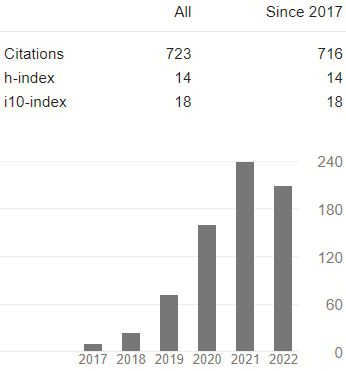UJI KETAHANAN SAHAM VALUE DAN GROWTH INDUSTRI FOOD & BEVERAGES PADA BUSINESS CYCLE INDONESIA PERIODE 2012—2016
DOI:
https://doi.org/10.25170/jara.v13i1.487Keywords:
value investing, business cycle, composite leading indicators, value stock, growth stock, food & beveragesAbstract
The business cycle is a significant factor in the Indonesian economy because by observing the business cycle we can predict whether an economy will rise or fall within a given period. Business cycle can be reviewed by looking at composite leading indicator or commonly abbreviated as CLI. CLI in this study also examined how the relationship between the business cycle with the movement of stock prices in Indonesia. The food & beverages industry sector is selected with the consideration that the industry sector is resilient to all conditions in the business cycle. The result of this research is because CLI have positive relationship with return value stock and return from growth stock hence can be concluded that change of business cycle in Indonesia will bring change also for return value and return growth stock. However CLI has an effect but not significant for return value stock and return growth stock, this means stocks of food & beverages industry sector is quite resistant in the face of business cycle that happened in Indonesia.
References
Chi, W., Brooks, R., Bissoondoyal-Bheenick, E., & Tang, X. (2016).Classifying Chinese bull and bear markets: Indices and individual stocks. Studies in Economics and Finance, 33(4), 509-531.
Hidayat, T.(2017).Value investing beat the market in the five minutes!Jakarta: Elex Media Komputindo.
Indonesia Stock Exchange. (2019). Ringkasan Performa Perusahaan Tercatat. Diambil dari https://www.idx.co.id/data-pasar/laporan-statistik/ringkasan-performa-perusahaan-tercatat/
Kusuma, I. W., Surjaningsih, N., &Siswanto, B. (2004). Leading indikatorinvestasi Indonesia denganmenggunakanmetode OECD. Bulletin of Monetary Economics and Banking, 6(4), 13-40.
Kohers, T., &Kohli, R. K. (1992). The yearend effect in stock returns over business cycles: a technical note. Journal of Economics and Finance, 16(1), 61.
Liow, K. H. (2016). Linkages between cross-country business cycles, cross-country stock market cycles and cross-country real estate market cycles: Evidence from G7. Journal of European Real Estate Research, 9(2), 123-146.
Mennis, E. A. (1995). Security prices and business cycles. Financial Analysts Journal, 51(1), 44-50.
Nilsson, R., & Brunet, O. (2006). Composite leading indicators for major OECD non-member economies: Brazil, China, India, Indonesia, Russian Federation, South Africa (No. 2006/1). OECD Publishing.
Olbrich, M., Rapp, D. J., &Venitz, C. (2016). End the myth! on value investing’s incompatibility with Austrian economics. Journal of Prices and Markets, 5, 36-44.
Otuteye, E., &Siddiquee, M. (2015).Overcoming cognitive biases: A heuristic for making value investing decisions. Journal of Behavioral Finance, 16(2), 140-149.
Pae, J., Thornton, D. B., & Welker, M. (2005).The link between earnings conservatism and the price‐to‐book ratio. Contemporary Accounting Research, 22(3), 693-717.
Pandey, R., Patnaik, I., & Shah, A. (2017).Dating business cycles in India. Indian Growth and Development Review, 10(1), 32-61.
Ross, S. A., Westerfield, R. W.,&Bradford, D. J. (2010).Fundamentals of corporate finance.New York: McGraw-Hill.
Santoso, S. (2015).Menguasai SPSS 22: From basic to expert skills. Jakarta: PenerbitElex Media.
Kwag, S., &Whi, S. (2006).Value investing and the business cycle. JOURNAL OF FINANCIAL PLANNING-DENVER-, 19(1), 64.
Sumantyo, R., &Wahyuningsih, A. (2017).Analysis of Indonesia business sycle through composite leading indicator data processing for banking industry. JurnalKeuangandanPerbankan, 21(4).
Downloads
Published
Issue
Section
License
Authors who publish with this journal agree to the following terms:
- Authors retain copyright and grant the journal right of first publication with the work simultaneously licensed under a Creative Commons Attribution-ShareAlike 4.0 International License that allows others to share the work with an acknowledgment of the work's authorship and initial publication in this journal.
- Authors are able to enter into separate, additional contractual arrangements for the non-exclusive distribution of the journal's published version of the work (e.g., post it to an institutional repository or publish it in a book), with an acknowledgment of its initial publication in this journal.
- Authors are permitted and encouraged to post their work online (e.g., in institutional repositories or on their website) prior to and during the submission process, as it can lead to productive exchanges, as well as earlier and greater citation of published work.














